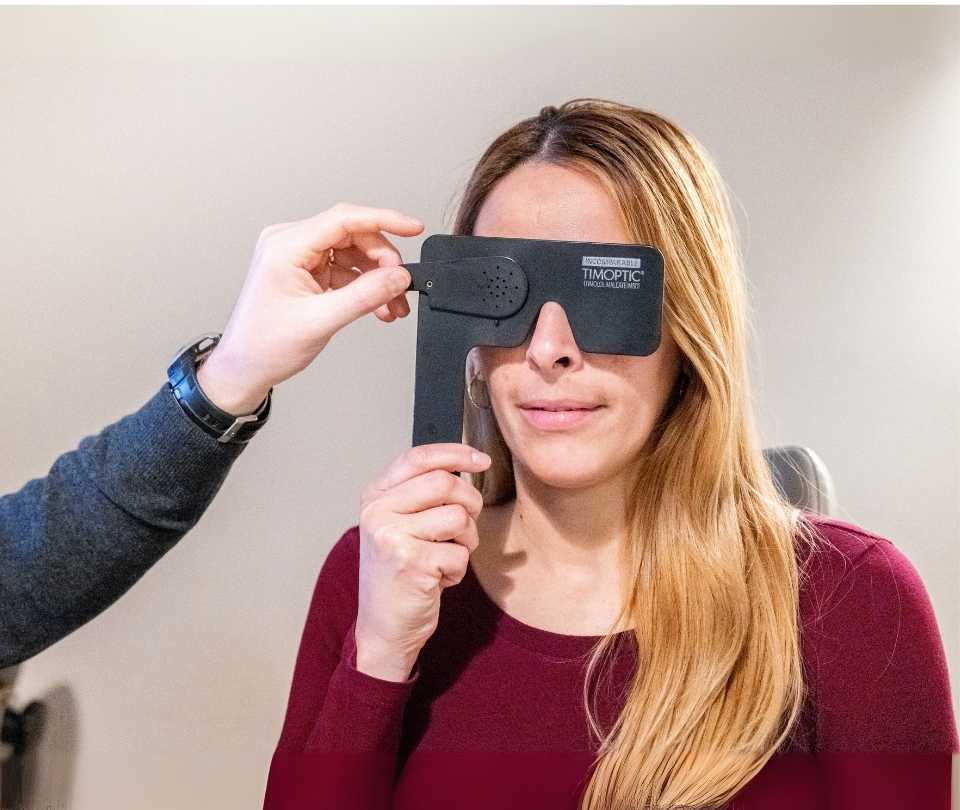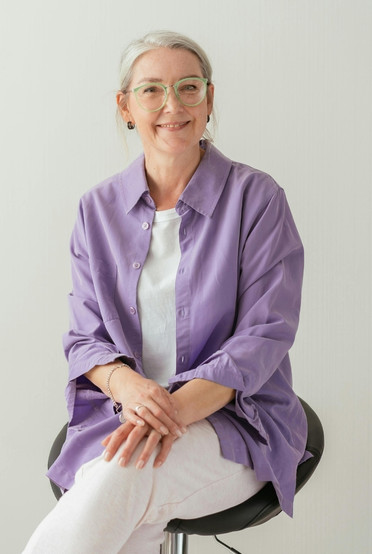Dry Eye: Beyond Tear Volume – Understanding Tear Film Stability


Request an Appointment
Dry eye is a complex condition that many mistakenly believe is only about not having enough tears. This misconception oversimplifies the problem by ignoring the critical role of tear quality and stability. Associated Eye Physicians & Surgeons of NJ proudly offers eye care at four convenient locations: Belleville serving Essex County, Rahway serving Middlesex and Union Counties, Jersey City serving Hudson County, and Union serving Union County.

Dr. Amanda Gredzik is an optometrist with a strong focus on therapeutic eye care, specializing in dry eye treatment, including the use of amniotic membranes and punctal plugs.
Understanding Dry Eye and Misconceptions




Importance of Tear Film Stability for Ocular Health
The stability of the tear film is vital for multiple reasons. First and foremost, it helps maintain a smooth ocular surface that is critical for clear vision. During each blink, your tear film refreshes the eye’s surface, removing debris and providing essential nutrients. However, if the tear film disintegrates too rapidly, this protective cycle is disrupted.
Secondly, an unstable tear film increases the risk of ocular surface inflammation. Persistent instability can lead to discomfort, redness, and a gritty sensation in the eyes. Over time, chronic exposure to such conditions may even result in more serious damage, such as corneal abrasion or ulceration. In severe cases, untreated tear film instability can be linked to long-term vision issues.
So when you hear the myth “dry eye is just about not having enough tears,” it’s fundamental to remember that the quality of the tear film and its ability to remain stable on the eye are just as important indicators of eye health as sheer tear production.
Everyday Impact on Activities
The effects of an unstable tear film are not just confined to the exam room—they impact your everyday life. You might notice that reading a book, working at your computer, or even watching television becomes more challenging when your vision intermittently blurs. These episodes of discomfort or fluctuating clarity are classic signs of tear film instability at work.
- Intermittent blurred vision that improves briefly with blinking.
- A persistent gritty or burning sensation, even when tears are flowing.
- Increased sensitivity to dry, cold, or windy conditions.
- Unexplained eye fatigue during prolonged tasks such as reading or computer work.
These signs are your body’s way of telling you that the problem isn’t simply a “tear deficit” but rather a disruption in the harmony of your tear film. Recognizing these symptoms early, and seeking advice from our eye doctors, can make all the difference in preserving your visual comfort and long-term eye health.


Addressing Misconceptions and the Need for Examinations




Preventative Measures and Lifestyle Adjustments
While professional evaluation is crucial, there are also simple lifestyle adjustments that can support tear film stability. Although these measures are not a cure, they serve as supportive practices in managing dry eye symptoms. Maintaining a well-balanced environment, staying hydrated, and taking regular breaks during visually demanding tasks can all assist in preserving the quality of your tear film.
For example, using a humidifier in dry or air-conditioned environments can help maintain ambient moisture, reducing the rate at which your tears evaporate. Additionally, ensuring adequate hydration and incorporating omega-3 fatty acids into your diet may support overall tear quality, contributing to a more stable film on your ocular surface.
Of course, these precautions complement—but do not replace—the personalized treatments prescribed by our eye doctors. Long-term comfort and ocular health are best achieved through a combination of lifestyle measures and targeted medical care tailored to your specific tear film dynamics.
Signs of
Unstable Tear Film
You might be wondering how to tell if your dry eyes are linked to tear film instability rather than just low tear production.
These symptoms often overlap and can vary in intensity throughout the day. It is important to note that even if you do not observe a significant tear volume reduction, you may still be at risk of ocular surface damage because of tear film instability.
Here are some common warning signs:
Treatment and Recommendations
When it comes to dry eye, the key is not to rely on a one-size-fits-all solution. Our eye doctors emphasize a detailed evaluation of your condition to distinguish between merely low tear production and the more complex issue of tear film instability. With a thorough examination, they determine if your symptoms arise from aqueous deficiency, an evaporative process, or a mixed mechanism that involves both aspects.
After establishing a clear diagnosis, our eye doctors work closely with you to develop a treatment plan that may involve a combination of therapies aimed at enhancing tear film stability. Whether it’s recommending specialized artificial tear formulations designed to mimic natural tear layers or advising on therapies to improve meibomian gland function, the focus remains on restoring a well-balanced tear film.
Remember, addressing dry eye early is essential. If you’re experiencing persistent discomfort, blurred vision, or unusual eye sensitivity—even if your tear production seems normal—it’s important to get a comprehensive evaluation. Our eye doctors are here to provide you with personalized care so that you can maintain lasting comfort and protect your vision.
Your Trusted Eye Doctors Serving Central and Northern NJ
In conclusion, understanding the complexity of dry eye is crucial for maintaining ocular health. Associated Eye Physicians & Surgeons of New Jersey recognizes that dry eye involves not only the quantity of tears but also their quality and stability. By emphasizing personalized treatment, our eye doctors aim to address the underlying causes of your symptoms effectively. With modern diagnostic techniques and a tailored approach, we prioritize your comfort and long-term eye health. Experience personalized, expert eye care by scheduling an appointment with our eye doctors in Belleville, Jersey City, Rahway, or Union, NJ.
Request an Appointment
- Comprehensive Dry Eye Care
- Air pollution and Dry Eye Disease
- Demodex Blepharitis
- Depression and Dry Eye
- Dry Eye in Older Adults
- Preservative-Free Eye Drops
- Punctal Occlusion
- Sensitivity to light caused by dry eye?
- Eye Fatigue and Dry Eye
- Dry Eye and Tear Film Stability
- Managing Dry Eye
- Sleep Quality and Dry Eye
- The Nuances of Eye Drops
- Dry Eye Syndrome and Its Impact on Vision
- Understanding Dry Eye: Beyond Insufficient Tears
- Accutane Use and Dry Eye
- Blinking Exercises for Dry Eye Relief
- Antidepressants and Dry Eye
- Beta-blockers and Dry Eye
- Antispasmodics and Dry Eye
- Can Dry Eye Cause Headaches?
- Managing Dry Eye from Antihistamines and Decongestants
- Oral Contraceptives and Dry Eye
- Contact Lens Induced Dry Eye (CLIDE)
- Removing Makeup With Dry Eye
- Lacrimal Probing
- Amniotic Membranes
- Finding the Best Eye Drops for Dry Eyes
- Chalazion Removal for Dry Eye
- Conjunctivitis or Dry Eye?
- Excessive Tearing and Dry Eye
- Foreign Body Sensation in Dry Eye
- How to apply eye drops for dry eye?
At Associated Eye Physicians of NJ, we’ve built our reputation on care that’s local, personal, and easy to get to. With offices in Belleville, Union, Jersey City, and Rahway, we’re proud to serve a wide range of communities across North and Central Jersey. Our Belleville team welcomes patients from all over Essex County, including Newark, Bloomfield, and Nutley. Rahway welcomes patients from across Middlesex and Union Counties, including nearby patients from Elizabeth, Avenel, Woodbridge, and Perth Amboy. Our Union office is a favorite for families from Union County, especially for those in Elizabeth and Cranford. And in Jersey City, we care for Hudson County residents, including our neighbors in Hoboken and Bayonne.
